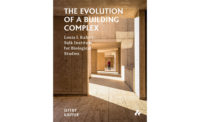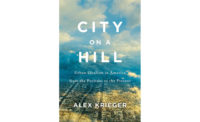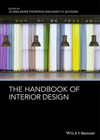The use of color in architectural practice has been a maddeningly difficult topic to find addressed satisfactorily in books. Perhaps the scantiness of the coverage reflects the lack of emphasis on color in design school curriculums. Whatever the reason, this new publication by a trio of German educators and practitioners is welcome. This title is precise. The authors explore how color intersects with geometry, light, and structure in a wide range of contemporary design projects. Examples include the headquarters for the bakery 21 Cake from People’s Architectural Office in Beijing (2012), where shimmering misty glass in primary colors lines the corridors, and Steven Holl’s Chapel of Saint Ignatius in Seattle (1997) that channels otherworldly light into the interior through volumes with colored lenses and surfaces.
The authors’ enthusiasm for their subject is vividly reinforced with luminous graphics and illustrations, beginning with two-dimensional work. Paintings from Delacroix to the Impressionists and the canvases of Marc Rothko set the stage for a thorough analysis of three-dimensional color application in architecture. While eschewing extended theoretical discussions, Schultz, Wiedermann-Tokarz, and Hermann concentrate on how color in buildings has been viewed historically by Winckelmann, Semper, Loos, Le Corbusier, and others.
Most important for practitioners is the way the authors zero in on the experience of color for those inhabiting architectural spaces. It is hardly a new notion that surface color can make a space seem wider or narrower, larger or smaller. The book, however, presents many examples where color is more than a simple perceptual tool to make the most of limited space; it can affect the human response in subtle ways. For example, the French architect Dominique Coulon transformed institutional corridors in a seniors’ health care facility in Orbec, France (2015), into inviting meeting spaces by using optical tricks with floors and walls partly painted red and partly painted white. This perspectival shift, or anamorphosis, which changes depending on where the viewer stands, is also dramatically shown in the reception room of Optimedia in Moscow (2017) designed by VOX Architects. There, canary yellow portals and floor surfaces seem to float monumentally above a blue floor.
The authors also demonstrate the potential of color to act as a kind of “material” capable of creating a sense of depth, texture, and spatial complexity for aesthetic pleasure. In an amusing example, architect Oskar Putz created the Kix bar in Vienna (1987), where painted arches and actual arches seem to dance intoxicatingly about.
A book with this ambitious a focus has to suffer some shortcomings. You won’t find guidance for the practical business of negotiating color selection with clients or the role color plays in drafting and modeling, or, for that matter, clues to cultural influences on choices of certain hues beyond Europe’s and North America’s. The impact of new coloring compounds and technologies is not discussed, and such historic movements as the 1960s “supergraphics”—radiant with electrifying colors rooted in Pop Art—are bypassed. But what you will invaluably discover is how to refine and deepen your architectural thinking coloristically.







